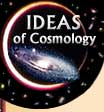
|
|
 |
Who
Was George Ellery Hale? |

|
|
|
|
George Ellery Hale (1868-1938)
Hale's father paid for a 60-inch diameter mirror for an even larger, reflecting telescope, but Hale was unable to obtain local funding to mount the mirror. In 1902 Andrew Carnegie, who had made an immense fortune transforming the steel industry, established the Carnegie Institution to encourage investigation, research, and discovery in the broadest and most liberal manner. Carnegie gave $10 million dollars to his new foundation. This amount (which would be roughly ten times as much in today's dollars) topped the total of endowed funds for research in all American universities combined. Hale received $150,000 and the promise of $300,000 more, and in 1904 founded the Mount Wilson Solar Observatory on Wilson's Peak above Los Angeles. Earlier in the year, Hale had lugged a small telescope and supplies on the backs of two burros to the top of the mountain to test observing conditions. In 1908 the 60-inch telescope went into operation. Carnegie visited Mount Wilson in 1910 and was so impressed that he turned over another $10 million to the Carnegie Institution with a recommendation to vigorously push work on the mountain. Hale had already gotten a pledge of $45,000 from John Hooker, a local businessman, for casting and grinding a 100-inch glass disk for the telescope's main mirror, and it had been cast successfully. The total cost of the "Hooker telescope," completed in 1917, was over half a million dollars. Research at Hale's new observatory focused on the new field of "astrophysics," which was replacing the traditional positional astronomy that measured positions of stars but ignored their physics. Hale also importantly advanced astrophysical studies with his new Astrophysical Journal. But the main features of his career after he left Yerkes mingled inextricably with the story of the rebirth of the reflecting telescope. |
|
Copyright ©. Brought to you by the Center for History of Physics, a Division of the American Institute of Physics |